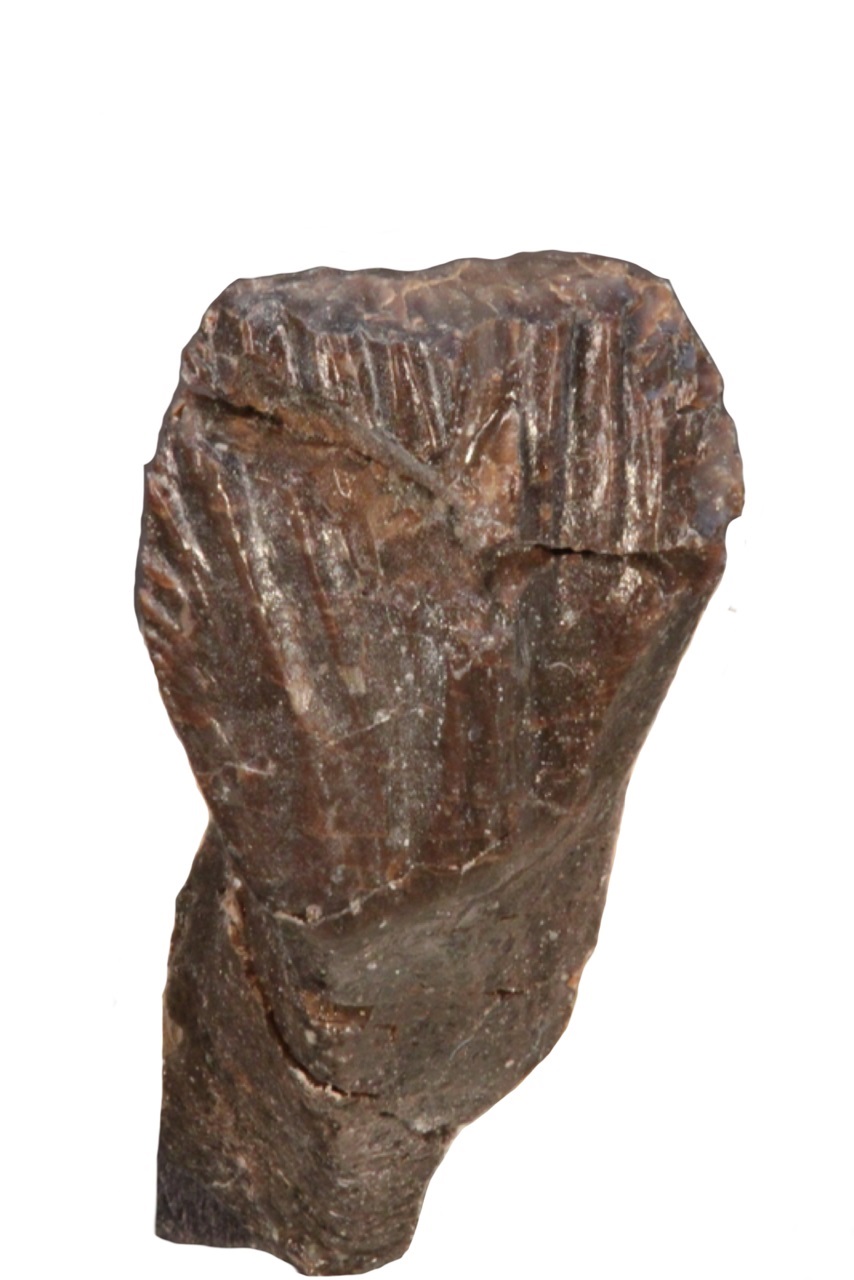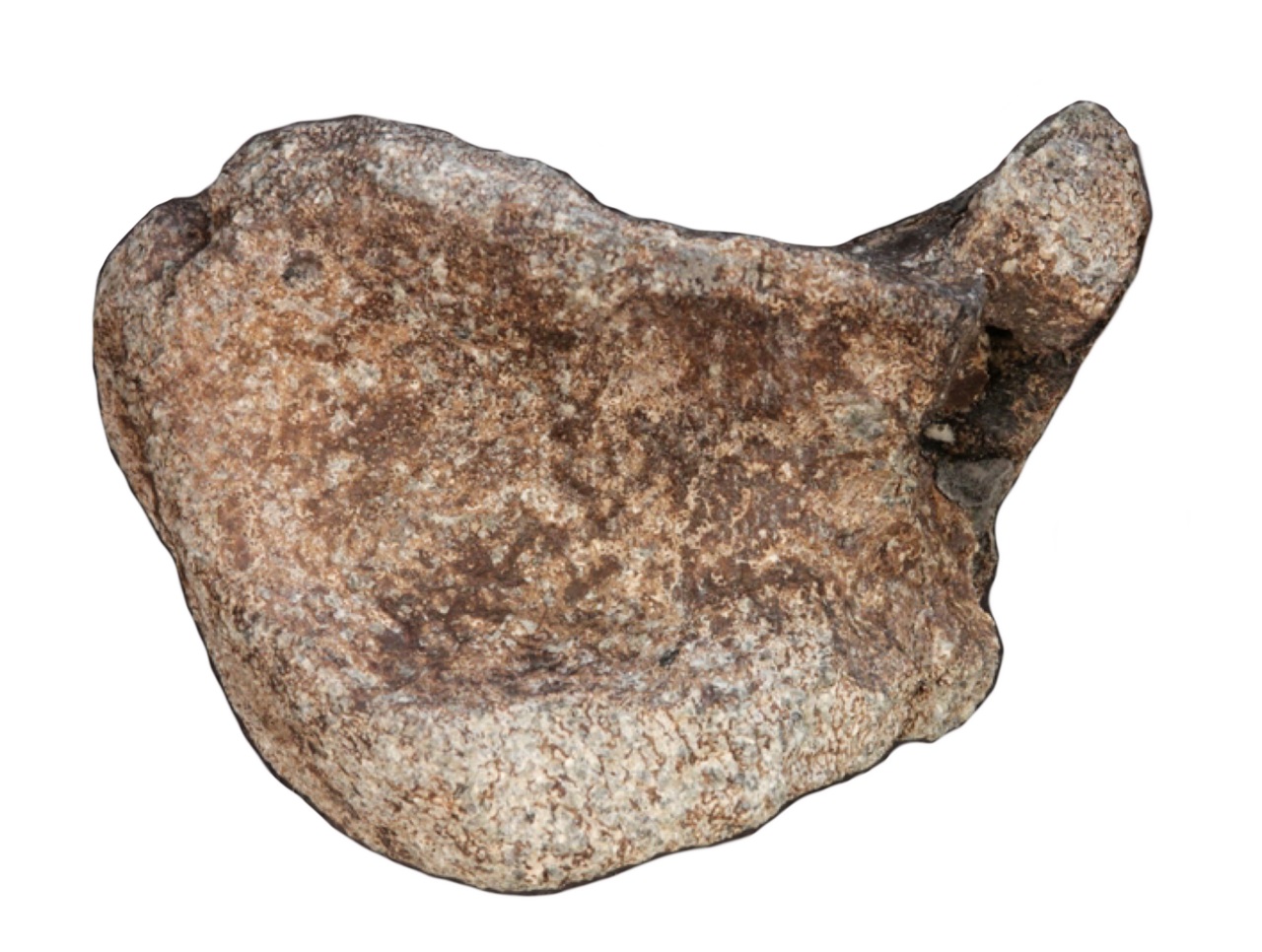ETRW update August 2017
Preparation is continuing on the fossil bones found during the recent Eric the Red West field trip. As mentioned in the May update, preparation of the fossil bones is a slow process. Although the bones are small compared with the colossal sauropod dinosaur bones recently found near Winton in Queensland, they are very brittle and often broken into two or more pieces that have to be carefully glued back together. The only way the bones are found is by breaking them. The fossil layer at Eric the Red West varies in depth from 20–30cm to nearly one metre thick. It is a hard sandstone conglomerate, which takes quite a bit of effort to break up, using mallets and chisels. The hope is to break the rock through a fossil bone encased within the rock so that when you look at the newly exposed surface you will see a cross-section through a bone. Unfortunately, due to the brittle nature of the bones, they sometimes do not break cleanly (image #1) and have to be stabilized on site (image #2) before they are wrapped and catalogued. A weak solution of Paraloid (described in detail in "Fossil Prep 2"), is applied to the broken surface of the bone in order to consolidate the bone (image #3) and prevent further disintegration during transport. Any tiny fragments of the bone are also collected and wrapped separately in the hope that they can be placed back on the bone in the laboratory.
Sometimes the bones are damaged prior to burial and this makes their preparation more problematic. One such specimen was found this year. It is a small ornithopod femur where the top and bottom of the bone (image #4) are perfectly preserved but the lower part of the shaft is completely distorted.
Some of the bones that have been prepared include a handsome ornithopod maxilla (upper jaw) with three teeth preserved, found by Dean Wright; an ornithopod dinosaur basisphenoid (part of the braincase) found by Mary Walters (image #5); a large ornithopod dinosaur tooth (image #6), also found by Mary; a small theropod tooth found by Amber Craig and an ornithopod dinosaur astragalus (part of the ankle) found by Nick van Klaveren (image #7).
On the penultimate excavation day at the Eric the Red West site there was cause for great excitement. Twelve fossil bones were recovered very close to one another in a series of six interconnecting blocks of rock (image #8). The first bone to be discovered was an ornithopod dinosaur ilium; one of the bones of the hip (image #9). On trying to remove this bone from the fossil layer the excavators kept coming across more bones. Eventually they had to cease excavation as the tide was coming in and light was failing. However, the crew returned the next day and retrieved a number of additional bones from the same area in the fossil layer.
After the dig had ended two of the larger blocks of rock were CT scanned to see if any additional bones could be seen inside the rock. As there was no indication of more bones it was decided to prepare the exposed bones but not remove them completely from their association with one another. This exercise took approximately two months of careful preparation and resulted in an assemblage of bones, which are now on display in the Palaeontology Laboratory at Museum Victoria. The significance of this group of bones will be discussed by research leader Dr. Tom Rich in the 2017 Dinosaur Dreaming Annual report, which will be available later this year.
Although it is very tempting to return to Eric the Red West in 2018 to continue excavating the area where the bone assemblage was recovered, project leaders Dr. Tom Rich and Professor Patricia Vickers-Rich have decided to broaden Dinosaur Dreaming's focus and are planning a field trip to Winton in Queensland with some of the crew. However, it is anticipated that there will be a return to Eric the Red West in the near future.
Images:
1. Badly damaged dinosaur limb bone – note bone fragments (Courtesy of Wendy White)
2. Dig leader Dr. Steve Poropat stabilizing the broken dinosaur bone on site (Courtesy of Wendy White)
3. Application of a weak solution of Paraloid to stabilize the broken bone (Courtesy of Wendy White)
4. Small ornithopod dinosaur femur (thigh bone) – note the distorted section of lower shaft. Photographer Lesley Kool
5. Small ornithopod dinosaur basisphenoid – part of the braincase. Photographer Lesley Kool
6. Large ornithopod dinosaur tooth. Photographer Lesley Kool
7. Ornithopod dinosaur astragalus – part of the ankle. Photographer Lesley Kool
8. Blocks of rocks containing 11 associated fossil bones, prior to preparation. Photographer Lesley Kool
9. Ornithopod dinosaur ilium (part of the hip). Photographer Lesley Kool
Image #1 Badly damaged dinosaur limb bone – note bone fragments (Courtesy of Wendy White)
Image #2 Dig leader Dr. Steve Poropat stabilizing the broken dinosaur bone on site (Courtesy of Wendy White)
Image #3 Application of a weak solution of Paraloid to stabilize the broken bone (Courtesy of Wendy White)
Image #4 Small ornithopod dinosaur femur (thigh bone) – note the distorted section of lower shaft. Photographer Lesley Kool
Image #5 Small ornithopod dinosaur basisphenoid – part of the braincase. Photographer Lesley Kool

Image #6 Large ornithopod dinosaur tooth. Photographer Lesley Kool

Image #7 Ornithopod dinosaur astragalus – part of the ankle. Photographer Lesley Kool
Image #8 Blocks of rocks containing 11 associated fossil bones, prior to preparation. Photographer Lesley Kool
Image #9 Ornithopod dinosaur ilium (part of the hip). Photographer Lesley Kool
visits